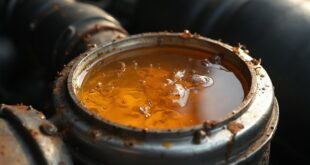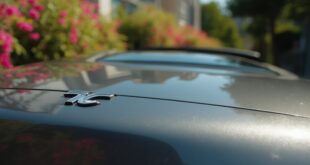DOT 3 and DOT 4 brake fluids are both glycol-based, but they have key differences. DOT 4 has higher wet and dry boiling points, making it more suitable for high-performance applications. While DOT 3 works well for everyday driving, DOT 4 prevents brake fade under intense conditions. Although these fluids can be mixed, it is not advisable for best performance. Understanding these differences can help in making informed choices about brake fluid types. More insights await in the details.
Key Differences Between DOT 3 and DOT 4 Brake Fluid
Although both DOT 3 and DOT 4 brake fluids are glycol-based and hygroscopic, they greatly differ in their performance characteristics, particularly in boiling points.
DOT 4 brake fluid features higher wet and dry boiling points, making it more suitable for high-performance applications. This characteristic allows vehicles to withstand more intense braking conditions without experiencing brake fade.
While DOT 3 remains popular for everyday use, DOT 4 is increasingly favored in modern systems due to its superior performance.
Although DOT 4 is generally more expensive, its enhanced capabilities justify the investment for those requiring reliable braking performance under demanding circumstances.
Mixing Compatibility of Brake Fluids
How compatible are different types of brake fluid when it comes to mixing? The compatibility primarily hinges on their glycol-based formulation.
While DOT 3 and DOT 4 can be mixed, caution is advised. Consider the following points:
- Mixing DOT 4 with DOT 3 is not recommended for ideal performance.
- DOT 3 systems can benefit from DOT 4 fluid for enhanced durability.
- DOT 5, being silicone-based, is entirely incompatible with both DOT 3 and DOT 4.
- Mixing different types may result in reduced boiling points, compromising braking efficiency.
Thus, maintaining the correct fluid type is essential for safety.
Maintenance Tips for Brake Fluid Replacement
When should brake fluid be replaced to confirm peak performance? It is recommended that DOT 4 brake fluid be replaced every two years, while heavier-duty applications may require more frequent changes. Following the manufacturer's guidelines guarantees superior performance and safety. Regular inspections of brake fluid levels and condition can prevent potential issues.
| Maintenance Tip | Frequency |
|---|---|
| Replace DOT 4 brake fluid | Every 2 years |
| Inspect fluid condition | Every 6 months |
| Check for contamination | Every service interval |
| Monitor fluid levels | Monthly |
| Flush system in heavy use | Annually |
Frequently Asked Questions
Can I Use DOT 4 in a DOT 3 System?
The individual pondered whether DOT 4 could be utilized in a DOT 3 system. Experts suggest that while mixing is possible, it may compromise performance, so adhering to manufacturer recommendations is essential for ideal safety and function.
How Do I Check Brake Fluid Levels?
To check brake fluid levels, one should locate the reservoir, typically near the back of the engine bay. Observing the fluid level against the markings guarantees adequate fluid for peak braking performance.
What Are the Signs of Brake Fluid Contamination?
Signs of brake fluid contamination include discoloration, a milky appearance, or the presence of debris. Additionally, a decrease in braking performance or a spongy brake pedal may indicate that the fluid requires replacement or maintenance.
How Can I Safely Dispose of Old Brake Fluid?
To safely dispose of old brake fluid, one should check local regulations and take it to a hazardous waste facility. Proper disposal prevents environmental contamination and guarantees compliance with safety standards.
Does Brake Fluid Expire or Have a Shelf Life?
Brake fluid does have a shelf life, typically around two years after opening. Over time, it can absorb moisture, which diminishes its effectiveness and can lead to brake failure if not replaced regularly.
 Car Service Land Coupons for Oil change, Tires, Wheel alignment, Brakes, Maintenance
Car Service Land Coupons for Oil change, Tires, Wheel alignment, Brakes, Maintenance




